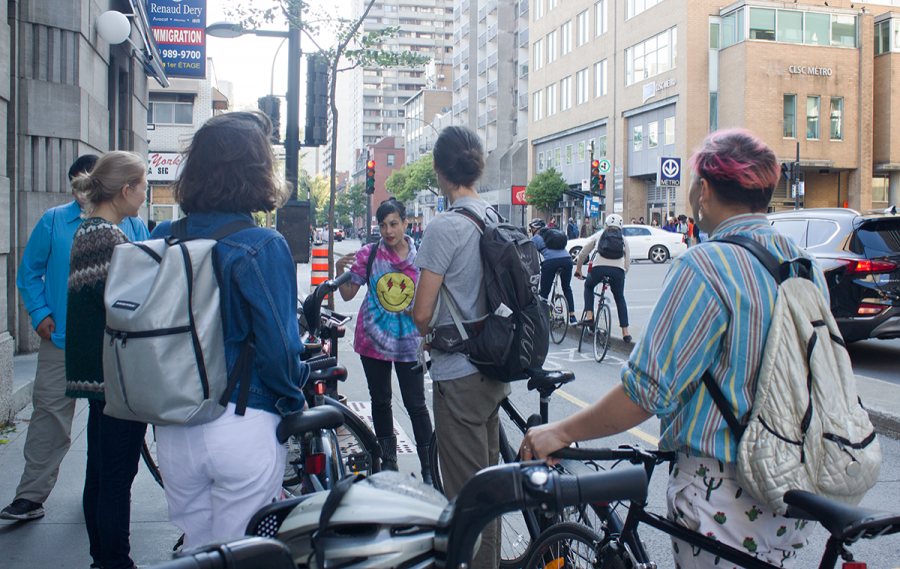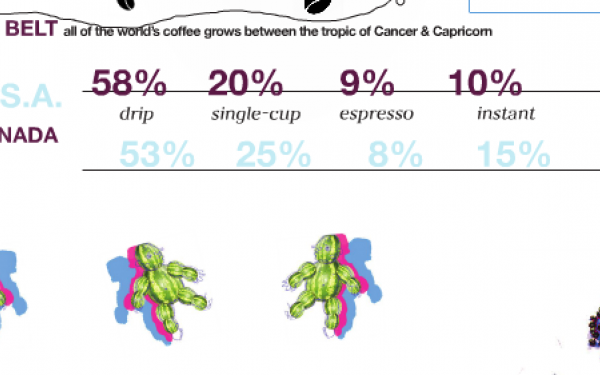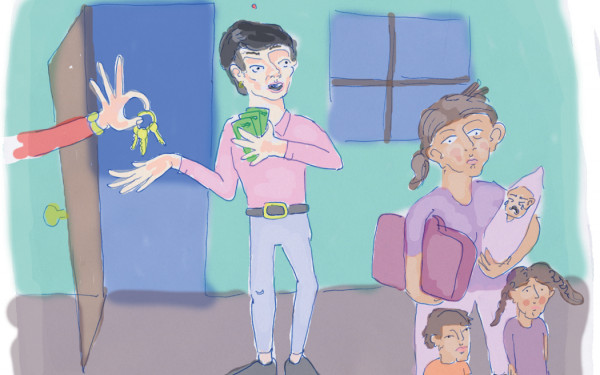(Dis)Orientation Hopes to Fill in the Gaps for New and Returning Students
An Alternate Welcome Week to Help You See Concordia in a Different Light
If you’ve been to Orientation week, you know that it boils down to about three kinds of events.
You pretty much learn in what general area your classes are, you find out about (and maybe even think about joining) the very large amount of clubs and student organizations at Concordia during the club fair and community fair, then you find out where all the drinking and party spots around campus are.
But what if you want to find out more about Concordia and its history? What if you don’t really want to party, or at least not with the people at frosh? What if you don’t drink at all?
That’s where (Dis)Orientation—the radical alternative to Orientation week—comes in. Open to new and returning students, as well as community members in general, it specifically attempts to fill in the gaps in what is learned at the Concordia Student Union’s orientation.
The difference between the two weeks isn’t just when they take place. Organized by the Quebec Public Interest Research Group’s Concordia chapter, the event also aims to disorient new students—as the name would imply— by presenting a different and unconventional view of Concordia and university life. It also aspires to give a space and an opportunity for students who may not fit in during traditional orientation to form social circles.
“While the normal orientation is meant to orient students in their new space, we take what they’re learning and say ‘look, this other side that’s between the lines and in the margins exists too’’’ says Jane Lefebvre-Prevost, the (Dis)Orientation coordinator for QPIRG Concordia.
For the 2019 edition, the organizers chose the theme “Lived Pasts and Material Futures.” It relates to the history of Concordia while acting as an opportunity to offer students a space to navigate their own future, said Lefebvre-Prevost.
The events, held from Sept. 10 through 14, were chosen to best serve members of marginalized communities at Concordia. This included two Naloxone & Overdose Prevention Training for Non-Medical Professionals, one given by Richard Davy, and the other, which was reserved for women and gender minorities, by CACTUS Montréal.
“With so much of orientation, and the first few weeks of school in general, being based around consumption [of drugs or alcohol], Naloxone training is extremely important,” says Lefebvre-Prevost.
Some of the training was offered exclusively to women and gender minorities as “some people feel more comfortable in exclusive spaces, where they can share their own experiences with others who might have had those experiences, without judgement from others that may not fully understand what they are going through,” said Lefebvre-Prevost
(Dis)Orientation also hosted a Queer support group event on Sept. 12, with the goal of welcoming queer students who may be new to university, the city, or the country, and help them find a support system in an unfamiliar place, where it can be difficult to fit into social groups. Another was the Diversity/Adversity in STEM fields panel, where students could hear from four panelists that showed, through their paths in life, that it could be possible to succeed in STEM fields, even faced with artificial roadblocks like a lack of diversity in STEM.
Others were chosen to help learn about elements of Concordia’s history. This included the Underground Walking Tour of Concordia, which focuses on lesser-known parts of the history of Concordia as well as the history of its social justice movements, like Concordia’s student strike history. Another historically focused event during (Dis)Orientation was the Anti-Gentrification Community Bike Tour.
The tour, hosted by Wade Walker and Adrienne Pan of QPIRG, aimed to introduce the neighbourhoods around Concordia’s downtown campus, like the Shaughnessy Village, St-Henri, and Little Burgundy, through the lens of their social history, and how that history is being supplanted by gentrification.
At the second stop, at the corners of St Mathieu St. and St Catherine St., Pan commented on the queer history of the Shaughnessy Village, and how while much of Montreal’s queer community was now in the Village, it used to be centred very close to the downtown core.
“Police raids happened a lot, especially as Montreal hosted the Olympics and wanted to ‘clean up’ the city, so queer people were pushed out. Looking at this area now, if you didn’t know about its history, there’s no way you could ever tell,’’ says Pan.
At other stops, grassroots activists discussed the impact gentrification has had on their community, along with their plans to combat it. At the third stop of the tour, Cabot Square, was Wayne Robinson, an Indigenous activist and social worker.
He discussed the moving of the Open Door shelter to Park Avenue after it’s previous home, St. Stephen’s Anglican Church near Cabot Square, had been sold to a real estate developer. The difficulty of access to a shelter, along with the elimination of much of the green space in Cabot Square in 2015, has made things very difficult for the homeless there, many of whom are Indigenous.
So, why isn’t there just one Orientation week that covers all of these topics? Lefebvre-Prevost thinks that as long as a want and a need to help Concordia’s marginalized communities is present, so too will (Dis)Orientation.
“Those who came to our events were quite engaged, and they learned things about their school they otherwise wouldn’t have known about,” she said. “It pushed them to learn more about Concordia, things that they otherwise wouldn’t have learned about.”


_600_832_s.png)

_600_375_90_s_c1.jpg)


_600_375_90_s_c1.jpg)